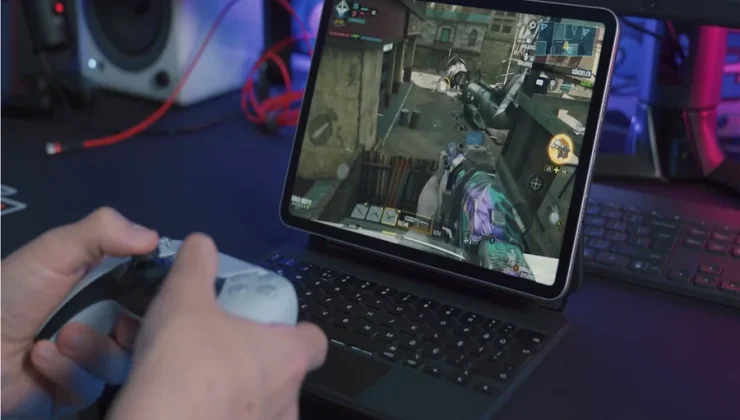Tech Driving the World’s Most Popular Online Games in 2025

Online games in 2025 are not just popular because they are entertaining. Their appeal stems from the technology working behind the scenes. Players want faster load times, sharper visuals, and better responsiveness.
Developers now rely on cutting-edge systems to meet these rising expectations. From server optimization to procedural generation, today’s top games reflect engineering as much as creativity. Whether it’s a casual mobile title or a massive multiplayer universe, the most successful experiences are shaped by silent, powerful innovations.
This year’s leaders in the space are using these tools to deliver smoother play, deeper engagement, and an unmatched level of polish.
Real-Time Rendering Improves Visual Consistency
Visual stability has become non-negotiable for 2025’s most played games. Studios now favor real-time rendering pipelines that remove many of the inconsistencies found in earlier models. This makes environmental elements like shadows, lighting, and texture blending appear more natural across devices. These enhancements matter across a wide range of genres.
Many online games, from card games to MMOs or MOBAs, benefit from better lighting transitions, reduced blur, and sharper animation consistency. Graphics no longer shift when changing camera angles or adjusting frame rates. This is especially vital in competitive games, where even a small visual hiccup could affect gameplay.
Players expect consistency regardless of hardware, and newer titles are built to scale without quality drop-off. The result is a more unified experience across console, PC, and mobile systems. Improved rendering also reduces motion blur and latency. These gains help maintain fluidity when users switch between in-game areas or interact with complex animations.
Multiplayer Load Handling Powers Seamless Sessions
What makes large-scale games truly functional is their ability to handle thousands of players at once. The underlying server architecture now enables global matchmaking without creating lag or load imbalance. This is due in part to adaptive traffic routing and load balancing technologies, which automatically distribute users based on server strain.
Game developers no longer rely on static server models. Instead, dynamic allocation ensures each session stays smooth, even under peak conditions. This is especially important for games that feature massive battle zones or continuous co-op play, where stability is just as critical as content.
Because latency issues are now minimized by proximity-based routing, players in different regions can connect with fewer interruptions. This kind of session reliability boosts player retention and keeps frustration levels low. It also reduces the need for frequent server resets or long wait times in lobbies.
Cross-Platform Sync Brings True Portability
The world’s most played titles in 2025 have embraced cross-platform syncing as a standard. Players expect to start on one device and continue on another without friction. Achieving this requires tight integration between cloud storage, account services, and live session data.
Modern game engines track user state across sessions, saving everything from skin selections to gameplay progress. When a player logs in from another device, the game reconstructs the session almost instantly. Progress carries over seamlessly, and achievements sync in real time.
This is especially impactful in mobile-connected ecosystems. Someone can pause a session on their console and resume it on a phone during a commute. The technology behind this was once reserved for premium games. Now it is available in most titles with large user bases.
This level of continuity has become part of the player expectation, rather than a value-add. It also increases overall engagement hours, since players are no longer tied to one screen or location.
Secure Payment Infrastructure Enhances Microtransactions
In 2025, no successful game can afford friction in its transaction systems. Players expect the checkout process to work the first time, every time. Behind this expectation is a blend of tools that quietly power the economy. Most studios now use embedded payment APIs that verify identity, confirm account status, and handle different regions’ laws.
What sets today’s systems apart is how they respond when something goes wrong. Failed payments do not block a session or corrupt a player profile. Instead, recovery systems trigger in real time. Refunds initiate automatically when needed, and purchase tokens expire safely if not completed. The most played titles now offer:
- Local currency support with regional pricing,
- Verified payment tokens for security,
- Instant rollback for failed transactions,
- Built-in spending history and limit.
This level of clarity gives users the confidence to engage more often. Skins, limited items, and unlockable features are no longer gated by unreliable processing. Trust in the transaction has become part of the game loop.
Cloud-Native Design Replaces Hardware Dependency
Finally, the shift toward cloud-native game design is removing hardware limits from the equation. In the past, a game’s complexity was bound by the user’s machine or console. In 2025, much of the processing load is handled remotely, especially in live multiplayer environments.
This offloading means lower-end devices can now support high-fidelity experiences. The game sends only the rendered frames and input signals, while the heavy lifting happens in remote data centers. This model allows for universal access regardless of a player’s device or upgrade cycle.
Developers also benefit by pushing a single version of the game across all platforms. Patches roll out uniformly, bugs are resolved centrally, and feature updates occur without delay. There is no need to maintain multiple forks or compromise feature sets for older machines.
As a result, accessibility widens without sacrificing performance. More players, more sessions, and more consistent experiences.
Key Innovations Leading the Online Gaming Shift
These technical breakthroughs are not invisible to players. They are felt in shorter load times, steadier frame rates, and games that stay fun longer. Studios continue to invest in infrastructure that supports smooth sessions, smarter content, and safer payment ecosystems.
As user expectations climb, the online games that succeed are those that meet these expectations quietly, through reliable tech choices. What defines success in 2025 is not just who plays your game, but how well it performs behind the scenes.








